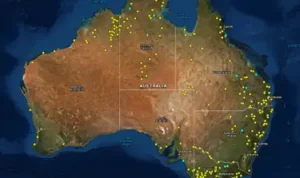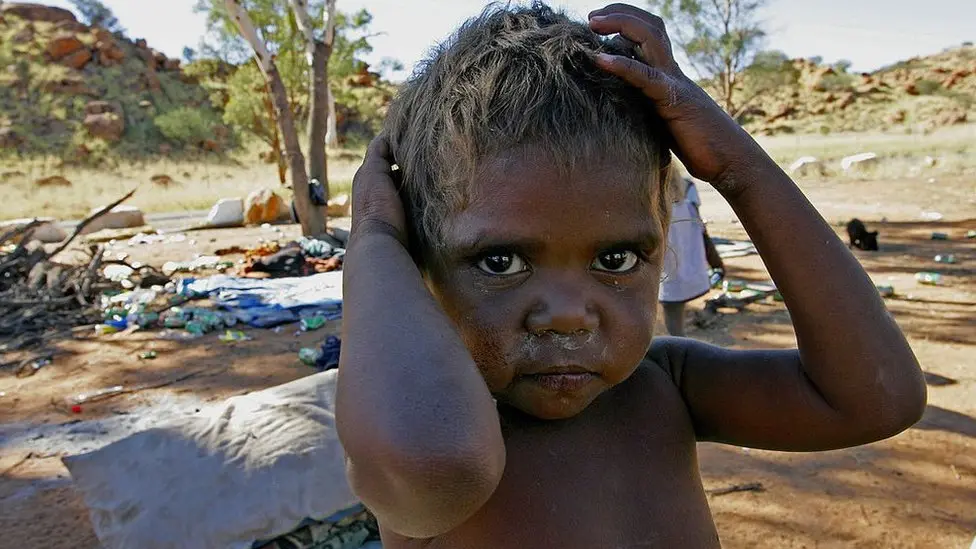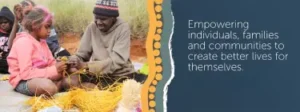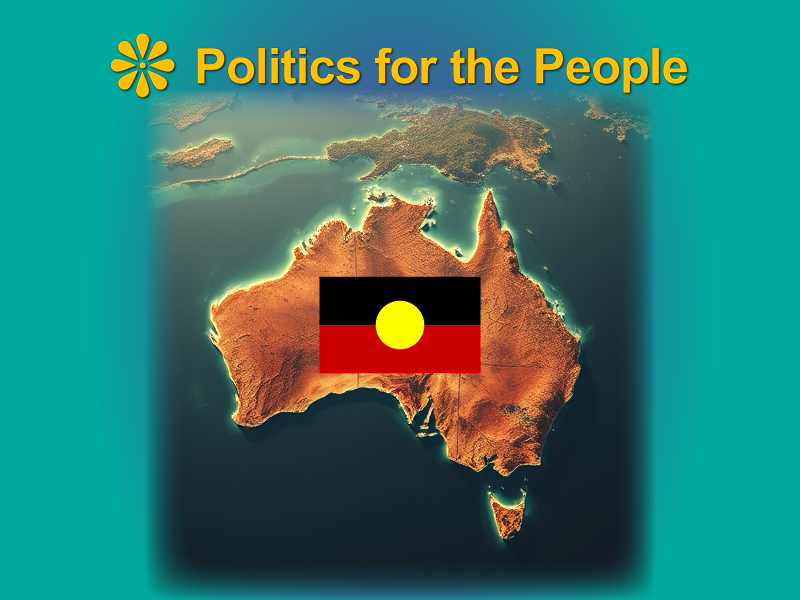Introduction

It is time to confront generational trauma. Australia’s First Nations People have endured centuries of systemic discrimination, oppression, and violence. This dark history has led to a cycle of generational trauma, clear in the disproportionately high rates of mental illness, substance abuse, domestic violence, and incarceration within Indigenous communities. This article explores the legacy of historical trauma and the steps needed for healing and reconciliation.

Understanding Generational Trauma
Generational trauma manifests through the loss of cultural identity, disrupted family structures, and altered socialization patterns. For Australia’s First Nations, this trauma stems from colonization, land dispossession, and the Stolen Generations, where children were forcibly removed from their families, causing lasting psychological and cultural damage.
Cultural Identity Loss
The loss of cultural identity among First Nations people is profound. Colonization disrupted traditional ways of life, erasing languages, customs, and spiritual practices. This disconnection from cultural roots has led to feelings of alienation and loss of purpose, further perpetuating the cycle of trauma.
In-Depth Exploration:
1. Language Suppression: Many Indigenous languages have become endangered or extinct due to policies that prohibited their use. Language is a vital part of cultural identity, and its loss means a loss of unique worldviews and traditions.
2. Cultural Practices: Traditional ceremonies, art, and spiritual practices were often banned or suppressed. Reviving these practices is crucial for cultural continuity and healing.
3. Community Displacement: Forced relocations and land dispossession have disrupted community cohesion, leading to a breakdown in social structures and cultural transmission.
Disrupted Family Structures
The Stolen Generations, where Indigenous children were taken from their families to be assimilated into white society, caused deep scars. Families were torn apart, and the transmission of cultural knowledge was disrupted. The trauma of these events continues to affect descendants, manifesting in various social and psychological issues.
In-Depth Exploration:
1. Psychological Impact: The forced removal caused severe emotional distress, leading to long-term psychological issues such as depression, anxiety, and PTSD.
2. Loss of Parenting Skills: Removed children often grew up without traditional parenting role models, affecting their ability to parent effectively.
3. Intergenerational Trauma: The trauma experienced by those who were removed affects their descendants, creating a cycle of emotional and social difficulties.
Altered Socialization Patterns
Colonization and forced assimilation policies have altered the socialization patterns of Indigenous communities. Traditional communal living and social structures were replaced with Western individualism, creating a cultural clash, and further worsening the trauma experienced by First Nations people.
In-Depth Exploration:
1. Community vs. Individualism: Indigenous cultures typically emphasize communal living and shared responsibilities, which contrasts with the Western focus on individualism.
2. Social Disintegration: The imposition of Western values has disrupted traditional social networks, leading to isolation and a loss of community support.
3. Cultural Clashes: The clash between Indigenous and Western values has created identity conflicts and difficulties in navigating two different worlds.
Health and Social Impact on First Nations Communities
The repercussions of this trauma are profound. Indigenous Australians face higher instances of mental health disorders, substance dependency, and a greater prevalence of domestic violence and child abuse. These issues are symptomatic of the deep-rooted trauma inflicted over generations.
Mental Health Disorders
The intergenerational transmission of trauma has led to elevated rates of mental health issues among Indigenous Australians. Depression, anxiety, and PTSD are prevalent, often worsened by ongoing social and economic disadvantages.
In-Depth Exploration:
1. Prevalence Rates: Indigenous Australians are more likely to experience mental health issues compared to the non-Indigenous population.
2. Barriers to Care: Access to culturally appropriate mental health services is limited, leading to underdiagnosis and undertreatment.
3. Stigma and Shame: Cultural stigmas around mental health can prevent individuals from seeking help, worsening the issue.
Substance Dependency
Substance abuse is a common coping mechanism for those affected by generational trauma. The loss of cultural identity and the breakdown of community structures have left many Indigenous Australians vulnerable to alcohol and drug dependency as they seek ways to numb their pain.
In-Depth Exploration:
1. Coping Mechanism: Substance use is often a way to cope with the pain of trauma and loss.
2. Health Consequences: High rates of substance abuse led to numerous health issues, including liver disease, heart problems, and increased mortality.
3. Community Impact: Substance dependency can lead to family breakdowns, community violence, and further social disintegration.
Domestic Violence and Child Abuse
The legacy of trauma also manifests in high rates of domestic violence and child abuse within Indigenous communities. The breakdown of traditional family roles and the stress of living in a colonized society contribute to these issues, perpetuating the cycle of trauma and harm.
In-Depth Exploration:
1. Root Causes: Domestic violence and child abuse are often symptoms of deeper issues related to trauma, poverty, and marginalization.
2. Cycle of Abuse: Children who grow up in abusive environments are more likely to perpetuate the cycle of violence in their own families.
3. Need for Support Services: Effective support services and interventions are crucial in breaking the cycle of violence and providing safe environments for children.
Australia’s Role in Healing and Reconciliation
It is imperative for Australia to confront and address this generational trauma. This involves acknowledging past wrongs, supporting Indigenous-led healing initiatives, and actively working to rectify the socio-economic disparities that perpetuate this cycle of trauma.
Acknowledging Past Wrongs
Acknowledgment of historical injustices is the first step toward healing. Recognizing the harm caused by colonization, land dispossession, and the Stolen Generations is crucial in validating the experiences of First Nations people and fostering a sense of justice.
In-Depth Exploration:
1. National Apologies: Formal apologies, like the one delivered by Prime Minister Kevin Rudd in 2008, are symbolic but important steps in acknowledging past wrongs.
2. Educational Programs: Incorporating Indigenous history and perspectives into the national curriculum helps build awareness and understanding among all Australians.
3. Commemorative Events: National days of remembrance and commemoration can honour the resilience of First Nations people and promote healing.
Supporting Indigenous-Led Healing Initiatives
Promoting healing requires backing initiatives led by First Nations People. This includes preserving Indigenous languages, cultural practices, and empowering Indigenous organizations dedicated to bridging social and economic gaps. Supporting mental health services tailored to Indigenous needs and funding programs that promote cultural reconnection are essential steps.
In-Depth Exploration:
1. Language Revitalization: Programs aimed at preserving and teaching Indigenous languages help restore cultural identity and pride.
2. Cultural Centres: Setting up cultural centres that celebrate Indigenous heritage provides a space for community gathering and cultural education.
3. Economic Empowerment: Supporting Indigenous businesses and ensuring fair access to economic opportunities can help bridge socio-economic gaps.
The Path to Truth-Telling and Healing
A crucial step in healing is truth-telling. Acknowledging the historical and ongoing impacts of colonization and the Stolen Generations is vital. Learning from global examples like the Truth and Reconciliation Commissions in South Africa and Canada can guide Australia in its journey towards reconciliation.
Learning from Global Examples
The Truth and Reconciliation Commissions (TRC) in South Africa and Canada provide valuable models for Australia. These commissions helped national dialogues about historical injustices, promoted healing, and recommended practical steps for reconciliation. Adopting a similar approach can help Australia address its own history and move towards a more inclusive future.
In-Depth Exploration:
1. South Africa’s TRC: Focused on apartheid-era crimes, South Africa’s TRC emphasized restorative justice and healing.
2. Canada’s TRC: Addressed the legacy of residential schools, providing a platform for survivors to share their stories and recommendations for reconciliation.
3. Australian Context: Implementing a similar commission in Australia can help document Indigenous experiences, promote understanding, and guide policy changes.
Promoting Truth-Telling Initiatives
Establishing platforms for truth-telling where Indigenous voices can share their stories and experiences is critical. These initiatives can foster understanding and empathy among non-Indigenous Australians, creating a foundation for meaningful reconciliation.
In-Depth Exploration:
1. Oral Histories: Collecting and preserving oral histories of Indigenous experiences helps build a comprehensive record of the past.
2. Public Forums: Hosting public forums and discussions on historical injustices encourages national dialogue and collective reflection.
3. Media Campaigns: Using media to highlight Indigenous stories and perspectives can raise awareness and promote empathy.
Supporting Indigenous-Led Initiatives
Promoting healing requires backing initiatives led by First Nations People. This includes preserving Indigenous languages, cultural practices, and empowering Indigenous organizations dedicated to bridging social and economic gaps.
Preserving Indigenous Languages and Cultures
Language and culture are integral to identity and community cohesion. Supporting programs that revitalize and teach Indigenous languages and cultural practices helps restore a sense of pride and continuity among First Nations people.
In-Depth Exploration:
1. Language Schools: Setting up language schools and programs dedicated to teaching Indigenous languages ensures their survival and transmission to future generations.
2. Cultural Festivals: Organizing cultural festivals that celebrate Indigenous traditions fosters community pride and educates the broader public.
3. Heritage Preservation: Supporting efforts to document and preserve traditional knowledge, art, and practices helps support cultural heritage.
Empowering Indigenous Organizations

Empowering Indigenous-led organizations ensures that solutions are culturally appropriate and effectively address the needs of the community. These organizations play a crucial role in providing services, advocating for rights, and fostering economic opportunities for Indigenous Australians.
In-Depth Exploration:
1. Community Services: Indigenous organizations often provide essential services, including healthcare, education, and social support, tailored to the specific needs of their communities.
2. Advocacy: These organizations advocate for policy changes that address the socio-economic disparities and systemic barriers faced by Indigenous people.
3. Economic Development: Supporting Indigenous entrepreneurship and businesses contributes to economic self-sufficiency and empowerment.
A Collective Effort for a Better Future
Addressing generational trauma is not just an Indigenous issue but a national responsibility. Through collective efforts in recognizing the past, supporting cultural revival, and ensuring socio-economic equality, Australia can pave the way for a more inclusive and healed future.
National Responsibility
The legacy of historical trauma requires a collective response. Governments, institutions, and individuals must all play a part in supporting reconciliation and healing efforts. This includes policy changes, educational programs, and active participation in Indigenous-led initiatives.
In-Depth Exploration:
1. Policy Changes: Implementing policies that address the social determinants of health and well-being for Indigenous Australians is crucial.
2. Educational Programs: National education programs that incorporate Indigenous history and perspectives help build a more informed and empathetic society.
3. Community Engagement: Encouraging non-Indigenous Australians to engage with and support Indigenous communities fosters mutual understanding and collaboration.
Ensuring Socio-Economic Equality
Addressing socio-economic disparities is essential for breaking the cycle of trauma. Ensuring equal access to education, healthcare, and economic opportunities helps create a fairer society where all Australians can thrive.
In-Depth Exploration:
1. Educational Access: Providing fair access to quality education for Indigenous students is crucial for breaking the cycle of poverty and promoting upward mobility.
2. Healthcare Equity: Ensuring that Indigenous Australians have access to culturally appropriate healthcare services improves health outcomes and reduces disparities.
3. Economic Opportunities: Supporting initiatives that create job opportunities and promote economic self-sufficiency for Indigenous communities is vital for long-term prosperity.
Conclusion
Generational trauma has left deep scars on Australia’s First Nations people, manifesting in various social and health challenges. Acknowledging this trauma and supporting Indigenous-led initiatives are essential steps towards healing and reconciliation. By working collectively to address historical injustices and promote socio-economic equality, Australia can move towards a more inclusive and healed future.
Call to Action
Join the movement towards understanding, healing, and equality. Support Indigenous-led initiatives and advocate for inclusive policies.
Questions for Readers
1. How can individuals contribute to the healing and reconciliation process for Australia’s First Nations People?
2. What role should the government play in supporting Indigenous-led healing initiatives?
3. How can we ensure that the voices of First Nations people are heard in truth-telling processes?
Share this article with your contacts and on social media to spread awareness!
References:
Intergenerational trauma: https://australianstogether.org.au/discover-and-learn/the-wound/intergenerational-trauma/
What is intergenerational trauma? https://healingfoundation.org.au/intergenerational-trauma/
Decolonising the mind: working with transgenerational trauma and First Nations Peoples: https://www.judcom.nsw.gov.au/publications/benchbks/judicial_officers/decolonising_the_mind.html

